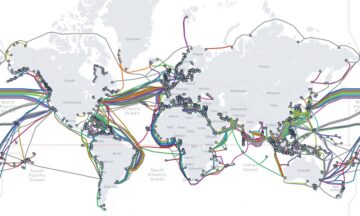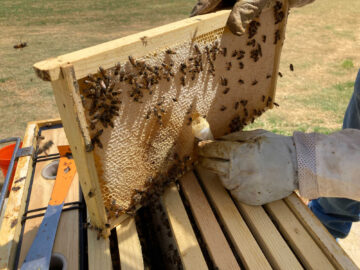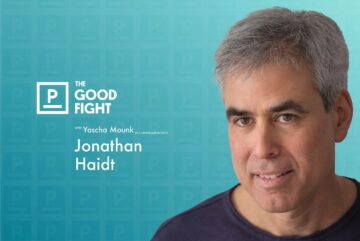Category: Archives
Do ‘Griefbots’ Help Mourners Deal With Loss?
Tim Reinboth in Undark:
 Various commercial products known as “griefbots” create a simulation of a lost loved one. Built on artificial intelligence that makes use of large language models, or LLMs, the bots imitate the particular way the deceased person talked by using their emails, text messages, voice recordings, and more. The technology is supposed to help the bereaved deal with grief by letting them chat with the bot as if they were talking to the person. But we’re missing evidence that this technology actually helps the bereaved cope with loss. Humans have used technology to deal with feelings of loss for more than a century. Post-mortem photographs, for example, gave 19th century Victorians a likeness of their dead to remember them by, when they couldn’t afford a painted portrait. Recent studies have provided evidence that having a drawing or picture as a keepsake helps some survivors to grieve. Yet researchers are still learning how people grieve and what kinds of things help the bereaved to deal with loss.
Various commercial products known as “griefbots” create a simulation of a lost loved one. Built on artificial intelligence that makes use of large language models, or LLMs, the bots imitate the particular way the deceased person talked by using their emails, text messages, voice recordings, and more. The technology is supposed to help the bereaved deal with grief by letting them chat with the bot as if they were talking to the person. But we’re missing evidence that this technology actually helps the bereaved cope with loss. Humans have used technology to deal with feelings of loss for more than a century. Post-mortem photographs, for example, gave 19th century Victorians a likeness of their dead to remember them by, when they couldn’t afford a painted portrait. Recent studies have provided evidence that having a drawing or picture as a keepsake helps some survivors to grieve. Yet researchers are still learning how people grieve and what kinds of things help the bereaved to deal with loss.
An approach to grief that focuses on continuing bonds with the deceased loved one suggests that finding closure is about more than letting the person go. Research and clinical practice show that renewing the bond with someone they’ve lost can help mourners deal with their passing. That means griefbots might help the bereaved by letting them transform their relationship to their deceased loved one. But a strong continuing bond only helps the bereaved when they can make sense of their loss. And the imitation loved ones could make it harder for people to do that and accept that their loved one is gone.
More here.
Many Democrats Are Worried Trump Will Beat Biden. This One Isn’t.
Adam Nagourney in The New York Times:
 Simon Rosenberg was right about the congressional elections of 2022. All the conventional wisdom — the polls, the punditry, the fretting by fellow Democrats — revolved around the expectation of a big red wave and a Democratic wipeout. He disagreed. Democrats would surprise everyone, he said again and again: There would be no red wave. He was correct, of course, as he is quick to remind anyone listening. These days, Mr. Rosenberg, 60, a Democratic strategist and consultant who dates his first involvement in presidential campaigns to Michael Dukakis, the Democratic presidential candidate in 1988, is again pushing back against the polls and punditry and the Democratic doom and gloom. This time, he is predicting that President Biden will defeat Donald J. Trump in November.
Simon Rosenberg was right about the congressional elections of 2022. All the conventional wisdom — the polls, the punditry, the fretting by fellow Democrats — revolved around the expectation of a big red wave and a Democratic wipeout. He disagreed. Democrats would surprise everyone, he said again and again: There would be no red wave. He was correct, of course, as he is quick to remind anyone listening. These days, Mr. Rosenberg, 60, a Democratic strategist and consultant who dates his first involvement in presidential campaigns to Michael Dukakis, the Democratic presidential candidate in 1988, is again pushing back against the polls and punditry and the Democratic doom and gloom. This time, he is predicting that President Biden will defeat Donald J. Trump in November.
…The idea of this interview is that, at a time when there is so much fretting in the Democratic world, you are not — and have never been — a bed-wetter. Can you explain why? This goes back to the midterm congressional elections in 2022, as I recall?
Yes. The argument I made then was threefold. One was that the Republicans did something unusual in 2022. Usually when a party loses elections, they run away from the politics that caused them to lose. And Republicans were running toward it. They were becoming ever more MAGA, even though MAGA had lost in 2018 and 2020. Second, that Biden was actually a good president, and we’d have a strong case to make. And third, there’s been this huge increase in citizen engagement in the Democratic Party. We’ve been raising crazy amounts of money and have an unprecedented number of volunteers because of the fear of MAGA.
More here.
Lost Scriptures of Ancient Israel
Byzantium Regained
Jerry Saltz at Vulture:
![]() In the year 286, Emperor Diocletian began to formalize a division of the Roman Empire into two parts. The Western Roman Empire would go on to become something of a decaying backwater, while the eastern half of the empire — known by historians as the Byzantine Empire — flourished for another thousand years and more. It was never utopia. It was centered on an estuary, where commerce, philosophy, and art flowed into the capital, Constantinople. At times, the Byzantine Empire grew to include areas of present-day Italy, Syria, Tunisia, Spain, and beyond. It died in 1453, when Constantinople’s gigantic guarding walls were breached by the Ottomans.
In the year 286, Emperor Diocletian began to formalize a division of the Roman Empire into two parts. The Western Roman Empire would go on to become something of a decaying backwater, while the eastern half of the empire — known by historians as the Byzantine Empire — flourished for another thousand years and more. It was never utopia. It was centered on an estuary, where commerce, philosophy, and art flowed into the capital, Constantinople. At times, the Byzantine Empire grew to include areas of present-day Italy, Syria, Tunisia, Spain, and beyond. It died in 1453, when Constantinople’s gigantic guarding walls were breached by the Ottomans.
To walk the remains of these walls today is a humbling reminder of how powerful this empire was. Since then, Byzantium has become a repository of romantic dreams, particularly for those who look at history and its cultural riches through a Western-centric lens. For many in the art world, Byzantium remains what Yeats called an “artifice of eternity” — a dream of civilization that was lost.
more here.
The Dam and the Bomb: On Cormac McCarthy
Walker Mimms at n+1:
 In McCarthy’s novels, people commit terrible acts—necrophilia, infanticide, cannibalism—and often with reason. His villains are symbols of that dark reason: the trio of swampland marauders in Outer Dark (1968), the dream-curdling scalp-hunter in Blood Meridian, the frigid bounty hunter stalking No Country. In The Passenger and Stella Maris, McCarthy tops this rap sheet with his worst crime yet: nuclear Armageddon. And the perp is one of American history’s finest minds, the porkpie-hatted architect of the atomic bomb, J. Robert Oppenheimer.
In McCarthy’s novels, people commit terrible acts—necrophilia, infanticide, cannibalism—and often with reason. His villains are symbols of that dark reason: the trio of swampland marauders in Outer Dark (1968), the dream-curdling scalp-hunter in Blood Meridian, the frigid bounty hunter stalking No Country. In The Passenger and Stella Maris, McCarthy tops this rap sheet with his worst crime yet: nuclear Armageddon. And the perp is one of American history’s finest minds, the porkpie-hatted architect of the atomic bomb, J. Robert Oppenheimer.
Though it isn’t Armageddon exactly. The Passenger is a historical novel set in 1980, and the world is still very much alive. The mere possibility of apocalypse by human means is crime enough. Throughout the novel, Bobby Western, a 36-year-old salvage diver and racecar driver, is haunted by his upbringing near the Oak Ridge National Laboratory in Tennessee, and in Los Alamos, New Mexico, two places where his physicist father, a protégé of Oppenheimer, helped design the device that would devastate Hiroshima in 1945.
more here.
Friday Poem
Ordinance on Arrival
Welcome to you
who have managed to get here
It’s been a terrible trip;
you should be happy you survived it.
Statistics prove that not many do.
You would like a bath, a hot meal,
a good night’s sleep. Some of you
need medical attention.
None of this is available.
These things have always been
in short supply; now
they are impossible to obtain.
…………………………………. This is not
a temporary situation;
it is permanent.
Our condolences on your disappointment.
It is not our responsibility
everything you have heard about this place
is false. It is not our fault
you have been deceived ,
ruined your health getting here.
For reasons beyond our control
there is no vehicle out.
by Naomi Lazard
from Poetry 180
Edited by Billy Collins
Random House, 2003
Thursday, April 4, 2024
“To Hell with Poets” by Baqytgul Sarmekova
Peter Gordon in the Asian Review of Books:
 How is a reviewer, faced with (yet another) excellent short-story collection, supposed to convey to readers a convincing rationale for “why this one?” To note that this author is Kazakh is necessary but insufficient; if diversity alone were the criterion, one would need an entire year to cycle through books from every country, territory and language in the world. To Hell with Poets is good not just in the context of Kazakh or even Central Asian writing available in English, but good, period.
How is a reviewer, faced with (yet another) excellent short-story collection, supposed to convey to readers a convincing rationale for “why this one?” To note that this author is Kazakh is necessary but insufficient; if diversity alone were the criterion, one would need an entire year to cycle through books from every country, territory and language in the world. To Hell with Poets is good not just in the context of Kazakh or even Central Asian writing available in English, but good, period.
So, why? Baqytgul Sarmekova is indeed Kazakh and the stories are set in Kazakhstan. The reader will be introduced to auls and tois, respectively villages and parties, particularly weddings.
Soon, the yellowish, moss-grown roofs tucked between drab-colored hills overgrown with squat tamarisk bushes came into view. The squalid aul looked like a sloppy woman’s kitchen.
She includes towns such as Astana and even Atyrau (on the Caspian) which the reader has probably never visited (although I, entirely coincidentally, have visited Atyrau, several times). There are stories about a rural way of life that hardly exists anymore in the developed anglophone world (and is probably on its way out in Kazakhstan as well). And yet, there are parts of the USA or Hong Kong that seem more exotic: Sarmekova’s stories and characters are so rooted in common humanity and daily life that little seems unfamiliar.
More here.
Undersea cables are the unseen backbone of the global internet
Robin Chataut in The Conversation:
 Have you ever wondered how an email sent from New York arrives in Sydney in mere seconds, or how you can video chat with someone on the other side of the globe with barely a hint of delay? Behind these everyday miracles lies an unseen, sprawling web of undersea cables, quietly powering the instant global communications that people have come to rely on.
Have you ever wondered how an email sent from New York arrives in Sydney in mere seconds, or how you can video chat with someone on the other side of the globe with barely a hint of delay? Behind these everyday miracles lies an unseen, sprawling web of undersea cables, quietly powering the instant global communications that people have come to rely on.
Undersea cables, also known as submarine communications cables, are fiber-optic cables laid on the ocean floor and used to transmit data between continents. These cables are the backbone of the global internet, carrying the bulk of international communications, including email, webpages and video calls. More than 95% of all the data that moves around the world goes through these undersea cables.
These cables are capable of transmitting multiple terabits of data per second, offering the fastest and most reliable method of data transfer available today.
More here.
Who’s Afraid of Frantz Fanon?
Sam Klug in the Boston Review:
 But single expressions are merely “pieces of a man,” as Adam Shatz, quoting Gil Scott-Heron, observes in The Rebel’s Clinic: The Revolutionary Lives of Frantz Fanon. In this timely and engaging new book—the first full-length biography in English since David Macey’s in 2000—Shatz restores a sense of wholeness to Fanon’s life and work. The unifying pursuit of Fanon’s life, Shatz argues, was the “disalienation” of those suffering from racial and colonial oppression—a project at once individual and social, clinical as well as political. For Fanon, Shatz concludes, this was the end goal of psychiatry as a practice of freedom.
But single expressions are merely “pieces of a man,” as Adam Shatz, quoting Gil Scott-Heron, observes in The Rebel’s Clinic: The Revolutionary Lives of Frantz Fanon. In this timely and engaging new book—the first full-length biography in English since David Macey’s in 2000—Shatz restores a sense of wholeness to Fanon’s life and work. The unifying pursuit of Fanon’s life, Shatz argues, was the “disalienation” of those suffering from racial and colonial oppression—a project at once individual and social, clinical as well as political. For Fanon, Shatz concludes, this was the end goal of psychiatry as a practice of freedom.
At a moment when Fanon is once again being deeply misread and distorted, The Rebel’s Clinic helps us return to all of Fanon—the fullness of his thought and practice beyond the familiar aphorisms.
More here.
Venkataraman Balakrishnan: Why is Quantum Mechanics so confusing?
A Comprehensive Guide to Beyoncé’s Cowboy Carter
Moises Mendez II in Time Magazine:
 Beyoncé releasing a new album is an event. Not only because she is one of the biggest pop stars in the world, but also because her music begs to be dissected with a fine-tooth comb. We started seeing her develop projects more focused on looking at a particular subject from different angles and exploring new genres with her music in 2016 with the release of Lemonade, a vulnerable album on which she openly calls out her husband’s infidelity. In 2022, she released Renaissance, a treasure trove of samples, interpolations, songwriters, producers, history, references, glitz, and glamor celebrating the queer ballroom community that had a hand in igniting the house genre. Cowboy Carter, released today after seven weeks of growing anticipation, builds on this idea of paying homage to the Black musical pioneers who paved the way.
Beyoncé releasing a new album is an event. Not only because she is one of the biggest pop stars in the world, but also because her music begs to be dissected with a fine-tooth comb. We started seeing her develop projects more focused on looking at a particular subject from different angles and exploring new genres with her music in 2016 with the release of Lemonade, a vulnerable album on which she openly calls out her husband’s infidelity. In 2022, she released Renaissance, a treasure trove of samples, interpolations, songwriters, producers, history, references, glitz, and glamor celebrating the queer ballroom community that had a hand in igniting the house genre. Cowboy Carter, released today after seven weeks of growing anticipation, builds on this idea of paying homage to the Black musical pioneers who paved the way.
…Cowboy Carter is dense with cultural references—incorporating the voices of country legends like Linda Martell, Willie Nelson, and Dolly Parton while also uplifting younger Black country talent like Tanner Adell, Shaboozey, Brittney Spencer, Tiera Kennedy, and Reyna Roberts. On the album, Beyoncé also reveals a bit more of herself in a few songs including, in one, her feelings on losing out on Album of the Year at the Grammys.
More here.
These Technologies Could Axe 85% of CO2 Emissions From Heavy Industry
Edd Gent in Singularity Hub:
 Heavy industry is one of the most stubbornly difficult areas of the economy to decarbonize. But new research suggests emissions could be reduced by up to 85 percent globally using a mixture of tried-and-tested and upcoming technologies. While much of the climate debate focuses on areas like electricity, vehicle emissions, and aviation, a huge fraction of carbon emissions comes from hidden industrial processes. In 2022, the sector—which includes things like chemicals, iron and steel, and cement—accounted for a quarter of the world’s emissions, according to the International Energy Agency.
Heavy industry is one of the most stubbornly difficult areas of the economy to decarbonize. But new research suggests emissions could be reduced by up to 85 percent globally using a mixture of tried-and-tested and upcoming technologies. While much of the climate debate focuses on areas like electricity, vehicle emissions, and aviation, a huge fraction of carbon emissions comes from hidden industrial processes. In 2022, the sector—which includes things like chemicals, iron and steel, and cement—accounted for a quarter of the world’s emissions, according to the International Energy Agency.
While they are often lumped together, these industries are very different, and the sources of their emissions can be highly varied. That means there’s no silver bullet and explains why the sector has proven to be one of the most challenging to decarbonize. This prompted researchers from the UK to carry out a comprehensive survey of technologies that could help get the sector’s emissions under control. They found that solutions like carbon capture and storage, switching to hydrogen or biomass fuels, or electrification of key industrial processes could cut out the bulk of the heavy industry carbon footprint. “Our findings represent a major step forward in helping to design industrial decarbonization strategies and that is a really encouraging prospect when it comes to the future health of the planet,” Dr. Ahmed Gailani, from Leeds University, said in a press release.
More here.
Thursday Poem
Cartoon Physics, Part 1
Children under, say ten, shouldn’t know
that the universe is ever-expanding,
inexorably pushing into the vacuum, galaxies
swallowed by galaxies, whole
solar systems collapsing, all if it
acted out in silence. At ten we’re still learning
the rules of cartoon animation,
that if a man draws a door on a rock
only he can pass through it.
Anyone else who tries
will crash into the rock. Ten-year-olds
should stick with burning houses, car wrecks,
ships going down—earthbound, tangible
disasters, arenas
where they can be heroes. You can run
back into a burning house, sinking ships
have lifeboats, the trucks will come
with their ladders, if you jump
you will be saved. A child
places her hand on the roof of a school bus,
& drives across a city of sand. She knows
the exact spot it will skid, at which point
the bridge will give, who will swim to safety
& who will be pulled under by sharks. She will learn
that if a man runs off the edge of a cliff
he will not fall
until he notices his mistake
by Nick Flynn
from Poetry 180
Random House, 2003
Wednesday, April 3, 2024
Porn Star and Feminist: On Jane Kamensky’s “Candida Royalle and the Sexual Revolution”
Fred Turner in the Los Angeles Review of Books:
 “DID PORN KILL feminism?” asked Amia Srinivasan in her widely read book The Right to Sex (2021). In the internet age, it sure can look that way. As Srinivasan pointed out, top commercial porn sites host billions of visitors every month. Today’s college students grew up with those sites just a click away. Many had their first sexual experiences in front of a computer screen. When she talked with her own college students, she saw the consequences:
“DID PORN KILL feminism?” asked Amia Srinivasan in her widely read book The Right to Sex (2021). In the internet age, it sure can look that way. As Srinivasan pointed out, top commercial porn sites host billions of visitors every month. Today’s college students grew up with those sites just a click away. Many had their first sexual experiences in front of a computer screen. When she talked with her own college students, she saw the consequences:
Could it be that pornography doesn’t merely depict the subordination of women, but actually makes it real, I asked? Yes, they said. Does porn silence women, making it harder for them to protest against unwanted sex, and harder for men to hear those protests? Yes, they said. Does porn bear responsibility for the objectification of women, for the marginalisation of women, for sexual violence against women? Yes, they said, yes to all of it.
If that’s true, then what should we make of the life of Candida Royalle? As Jane Kamensky’s beautifully crafted new biography, Candida Royalle and the Sexual Revolution: A History from Below, reveals, Royalle, who died in 2015, was a porn star and a feminist. And so were many of her friends. As Srinivasan notes, it would be easy to blame porn and the sex wars of the 1980s for turning a women’s liberation movement that “exploded with such joyous fury” in the 1960s into “a fractured and worn thing” today. But Kamensky’s deft portrait of Royalle undercuts that explanation, and even the tale of feminism’s decline.
More here.
On the Horizon: A Booming eDNA Marketplace
Emma Foehringer Merchant in Undark:
 Best Bees is one of the many companies carving out a niche in a commercial landscape increasingly focused on advertising environmental responsibility, pushed by both customer demand and regulatory requirements. Testing environmental DNA, which allows data to be gathered from the tiny pieces of skin, scales, and slime that species shed as they move through the world, has been framed as a cheap and efficient way to understand a corporation’s impact.
Best Bees is one of the many companies carving out a niche in a commercial landscape increasingly focused on advertising environmental responsibility, pushed by both customer demand and regulatory requirements. Testing environmental DNA, which allows data to be gathered from the tiny pieces of skin, scales, and slime that species shed as they move through the world, has been framed as a cheap and efficient way to understand a corporation’s impact.
As supporters lobby for regulatory acceptance, a group of large consulting companies and eDNA specialists see the tool as a promising way to monitor corporate sustainability, like measuring the success of conservation efforts or the possible effects of a new bridge or parking lot. Experts say eDNA has limitations and drawbacks. So far, it appears that the tool is best used as one tool among a suite of monitoring methods, so it’s unlikely the technology will completely disrupt the environmental consulting industry, which according to The Insight Partners, a market research firm, was valued at more than $34 billion globally in 2020. But eDNA has undoubtedly created new opportunities to gather and monetize data.
More here.
Jonathan Haidt on The Anxious Generation
Yascha Mounk and Jonathan Haidt at Persuasion:
 Yascha Mounk: It’s always a pleasure to have you on the podcast and particularly when you have an important new book which you have just published called The Anxious Generation, which really speaks to so many core concerns of what is happening in the United States, in Britain and around the world today.
Yascha Mounk: It’s always a pleasure to have you on the podcast and particularly when you have an important new book which you have just published called The Anxious Generation, which really speaks to so many core concerns of what is happening in the United States, in Britain and around the world today.
Why should we take this trend seriously? Why should we think that there really is something unusual about the rise of mental illness and other ills among teenagers and particularly young girls? And why should we think that this really is down to the rise of the internet and of social media in particular? And now I’m asking this because of course there have been many moral panics over the course of decades, right? Why is this not a moral panic, but a real trend that’s going on?
Jonathan Haidt: There certainly is a moral panic going on and it looks similar to previous ones. You know, the press gets involved, you get scare stories. But the question is, is it a justified panic or not?
More here.
AI reveals huge amounts of fraud in medical research
Wednesday Poem
To the Woman I saw Today Who Wept in Her car
I get it.
We are strangers,
but I know the heart is a hive
and someone has knocked yours
from its high branch in your chest
and it lays cracked and splayed,
spilling honey all over
the ground floor of your gut
and the bees inside
that you’ve trained
over the days and years
to stay put, swarm
the terrain of your organs,
yes,
right here in traffic,
while we wait for the light to change.
I get it.
How this array of metal and plastic
tends to go womb room
once the door shuts,
and maybe you were singing
only moments before
you got the call,
or remembered that thing
you had tucked back and built
such sturdy scaffolding all around,
and now here it comes to knock
you adrift with only your steering
wheel to hold you up.
Or, maybe today
was just a tough day
and the sunlight
and warm weather
and blossoming limbs
and smiling pedestrians
waiting for their turn to cross
are much too much to take
when you think of all that’s left
to do, and here you are,
a reed stuck in the mud
of a rush hour intersection,
with so very many hours left to go.
Woman,
I know you.
I know how that thing
when left unattended
will show up as a typhoon
at your front door
demanding to be let in
or it will take
the whole damn house with it.
I know this place too.
I get it.
But because we are strangers,
because you did not see me see you,
my gaze has no more effect
than a phantom that stares at the living.
And yet, I want you to know that
today, in the hive of my heart,
there is room enough
for you.
by Bianca Lynne Spriggs
from Split This Rock
A Devious Cellular Trick Cancers Can Use to Escape Your Immune System
Gina Kolata in The New York Times:
 In a surprise discovery, researchers found that cells from some types of cancers escaped destruction by the immune system by hiding inside other cancer cells. The finding, they suggested in an article published this month in the journal eLife, may explain why some cancers can be resistant to treatments that should have destroyed them. The research began when Yaron Carmi, an assistant professor at Tel Aviv University, and Amit Gutwillig, then a doctoral student studying in his lab, were studying which T cells of the immune system might be the most potent in killing cancers. They started with laboratory experiments that examined treatment-resistant melanoma and breast cancers in mice, studying why an attack by T cells that were engineered to destroy those tumors did not obliterate them.
In a surprise discovery, researchers found that cells from some types of cancers escaped destruction by the immune system by hiding inside other cancer cells. The finding, they suggested in an article published this month in the journal eLife, may explain why some cancers can be resistant to treatments that should have destroyed them. The research began when Yaron Carmi, an assistant professor at Tel Aviv University, and Amit Gutwillig, then a doctoral student studying in his lab, were studying which T cells of the immune system might be the most potent in killing cancers. They started with laboratory experiments that examined treatment-resistant melanoma and breast cancers in mice, studying why an attack by T cells that were engineered to destroy those tumors did not obliterate them.
…Every time, though, he saw some giant cells that remained after the T cells had done their job. “I wasn’t sure what it was, so I thought I would take a closer look,” he said. The giant cells turned out to be cancer cells that were harboring other cancer cells, protecting them from destruction. Once the cancer cells escaped to their hiding places, T cells could not get to them, even if the immune system killed the cancer cells that were serving as cellular bunkers. “It was like seeing the devil,” Dr. Carmi said. Cancer cells, he added, can remain in hiding “for weeks or months.”
More here.
